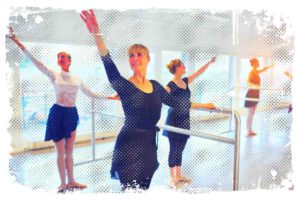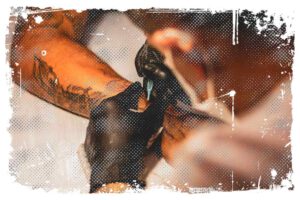Let me put it this way, time has really reshaped the perception of beauty standards in Poland. According to the polish „Perfect” music band, about thirty years back, every guy was in awe of „Pola Raksa’s face”. Fast forward to today, we see that features like Kim Kardashian’s curvy silhouette are what catches the eye.

This comes from a piece on the Canadian MTL site, which shared that most guys consider these celebrity attributes as the epitome of beauty. But I am convinced that this wasn’t always the case and these features can’t be achieved naturally. This puts immense pressure on girls who are trying to fit into these seemingly unattainable beauty standards which often require surgical procedures or artificial enhancements.
- You may also like this article: The Allure of Polish Girls – Why Do We Fall In Love in Seconds?

The Ever-Changing Beauty Standards
We’ve seen that beauty standards have evolved over time, aligning with the lifestyle of the era. I think it’s worth to mention that just a quarter-century ago, supermodels like Cindy Crawford, Elle Macpherson, or Naomi Campbell were the faces that men couldn’t resist. Their beauty symbolized not just physical attractiveness, but also a healthy lifestyle – they were fit, but not excesively thin, often sporting aerobic bands. They were relatable, and that’s what made them attractive to the public.
Although, about ten years later, a skinny Kate Moss with her androgynous beauty disrupted the fashion scene, by the end of another decade, this „heroin chic” look was no longer in vogue. The „healthy slim” physique, embodied by tanned, fit models like Gisele Bundchen, took center stage. If you remember, at the turn of the millennium, every girl wanted to resemble this famous Victoria’s Secret Angel. Exercise, not extreme dieting, was the ticket to this desirable figure.
↳ PRO TIP: Do you like traveling? Then before you buy any ticket or book an attraction, check if it's available in this worldwide Viator Database. You may save a lot of money and time. No need to thank me :)

The Modern-day Beauty Trends
Today, I believe, the beauty ideal seems to be leaning towards the artificial. Silicone-enhanced figures are increasingly becoming the new norm, which undoubtedly raises questions about the future. Such artificially created beauty standards are known to impact the self-esteem of women significantly.
Let me give you an insight. According to a study by Gfk Polonia in, only about 30% of Polish women considered themselves physically attractive. The aspects they were most insecure about included their belly (37%), teeth (17%), and legs and breasts (13%). Clearly, these women don’t feel like they measure up to the celebrities they see, most of whom are heavily photoshopped.

Even the internationally renowned model, Anja Rubik, who is considered one of the most beautiful women in the world, faces harsh criticism about her looks. After news broke out that Angelina Jolie, considered a sex icon, underwent a mastectomy, many people speculated that she would lose her sex symbol status, despite having a reconstructive surgery. These reactions show how fluid the concept of the „perfectly beautiful woman” is. So, if you’re striving for beauty, you need to know that it’s a constantly shifting goal post.
A Shifting Ideal of Beauty
I know the standard of beauty seems to be perpetually in motion. This is likely because many individuals, both men and women, align their understanding of beauty with what’s projected in media and on fashion runways. There, a near impossible standard of beauty has been propagated for years, showcasing ultra-thin, seemingly perfect women, enhanced by Photoshop and sometimes surgery.

This image, as I can tell, is often unrealistic and unachievable for many. Journalist Paulina Młynarska mentioned this in a recent interview, criticizing Poland’s skewed perception of beauty, one filled with silicon enhancements, pouty lips, and hair extensions.
Beauty Perception – An Evolving Phenomenon
If you want to get a better grasp of the changing beauty standards, you’d be interested to hear from renowned plastic surgeon, Dr. Andrzej Sankowski. He has observed how beauty ideals have evolved over the years, from the graceful and well-proportioned women in Greek statues to the curvier women in Rubens’s paintings.
He noted that unfortunately, the latter is now often deemed unattractive. There was also a time when extremely thin, almost anorexic-looking women were considered beautiful, but thankfully that trend didn’t last long.

Dr. Sankowski believes that this is why models like Anja Rubik face harsh criticism. According to him, many view Anja as too thin, while the 'ideal’ woman is considered to be proportionate – with equal-sized bust and hips, a narrow waist, and shapely legs that are neither too thin nor too long.
The Changing Face of Beauty
What is deemed a beautiful face has also significantly changed over the years.
„I used to see truly beautiful models, who were seen as the ideal. Now, some models might not conventionally be called 'beautiful’. They might have small eyes, a crooked nose, large ears, an asymmetrical face, yet they are considered attractive”, says Dr. Sankowski.
I think, today, being a model doesn’t necessitate fitting into a conventional 'beauty box’.
To him, a beautiful face is all about 'shape and proportion.’ He humorously cites Dorota Wellman’s phrase „for algae eaters”, alluding to the trend of oversized lips. According to him, a small nose and a not-too-large mouth are part of the beauty equation. But it is worth to say, beauty isn’t just about individual features – it’s closely linked to overall proportions.
Taste in Beauty – From Polish Preferences to Universal Desires
Here’s something interesting: there’s no such thing as a nationwide standard of beauty. Yes, you heard it right. Individual preferences prevail, with some people leaning towards 'aerodynamic’ women, while others preferring skinnier ones. This is the observation of sexologist Professor Zbigniew Lew-Starowicz. Prof. Starowicz refers to the work of psychologist Dr. David Buss in his famous book „Evolution of Desire„, which presents certain 'universal’ preferences for female beauty – a feminine silhouette, rounded figures, clear waist, and wide hips.

Buss defined the ideal partner for most men as a ’fertile woman’. This implies someone young, with a proportionate figure, a slim waist, and wide hips conducive for childbearing. He even calculated an ideal waist-to-hip ratio, which is 0.7. I think it’s interesting to note that according to him, we find symmetrical features the most attractive. This doesn’t just apply to the face, but the entire figure. A woman should also have a ’healthy appearance’, which includes healthy eyes and hair, clear skin, and full lips.
Polish Beauty – A Mix of Standards
Prof. Lew-Starowicz mentions that defining a singular beauty standard in Poland is trickier than in other countries. Let’s take a moment to think about that. If you look at Cuban, Italian, or Scandinavian women, each group has distinct characteristics that are often perceived as beautiful. In Poland, however, beauty perception is divided between blondes and brunettes – the „Slavic type” and the „borderland women”. It can be quite a challenge to pinpoint one ideal, as there are two distinct types to consider.
According to Dr. Sankowski, in Poland, the size 38, which corresponds to a woman „neither too thin nor too fat”, along with a bust size of C-cup, is considered ideal. He notes that previously, larger breasts were seen as more attractive, despite often looking unnatural and even grotesque. Today, it seems women are more inclined towards a 'C’ cup size. Men usually prefer smaller, more natural-looking breasts.
It’s also interesting to note that while many American women commonly want to resemble someone else, Polish women tend to focus on enhancing their own features. They want to minimize what they consider 'ugly’ and accentuate what’s 'pretty’. It’s less about copying a model from a magazine and more about embracing and highlighting their own beauty.
The Mysterious 'Something’ that Defines Beauty

I can tell you that a gorgeous face and a perfect figure aren’t always the golden tickets to being a beauty ideal. Sometimes, it’s about that elusive 'something’ a woman posseses. Dr. Sankowski highlights this with an example: Meryl Streep. She’s not your conventional beauty ideal, but many find her extremely attractive and feminine.
She has this indescribable 'something’ that makes her irresistible. One key feature in a woman’s face that plays a crucial role is her smile. If she has a beautiful smile, it brightens up her face, making wrinkles and minor imperfections negligible. But, let me say, looks alone aren’t everything. A woman should represent something more, something that makes her uniquely attractive.
Impact of Popular Culture on Beauty Standards
Beauty canons are often dictated by fashion designers, popular movie stars, and also audiences who have specific preferences. Dr. Sankowski recalls the incident when Nicole Kidman used too much Botox, resulting in an immobile face that no one wanted to see. Beauty perception is heavily influenced by American mass culture and its ideals.
I am convinced you would agree that Marilyn Monroe has been a long-standing icon of sexiness and beauty, even in Poland. This American culture resonates with us, and its influence is significantly more potent than, for instance, French culture.

Beauty Rankings – A Narrow Perspective?
Often, our notion of 'beauty’ is shaped by beauty rankings featuring actors, models, and journalists. However, it is worth to say that these rankings are limited in scope. They revolve around a specific professional group and don’t truly reflect the beauty standards of the entire country. Prof. Lew-Starowicz points out that these rankings often glorify people who aren’t necessarily liked by everyone. Attractiveness often ties with likability. The people we like tend to appear more attractive, while those we dislike can even invoke repulsion.
References:
- https://www.national-geographic.pl/artykul/czym-jest-dzisiaj-kanon-kobiecego-piekna-jak-na-przestrzeni-lat-zmieniala-sie-definicja-piekna



